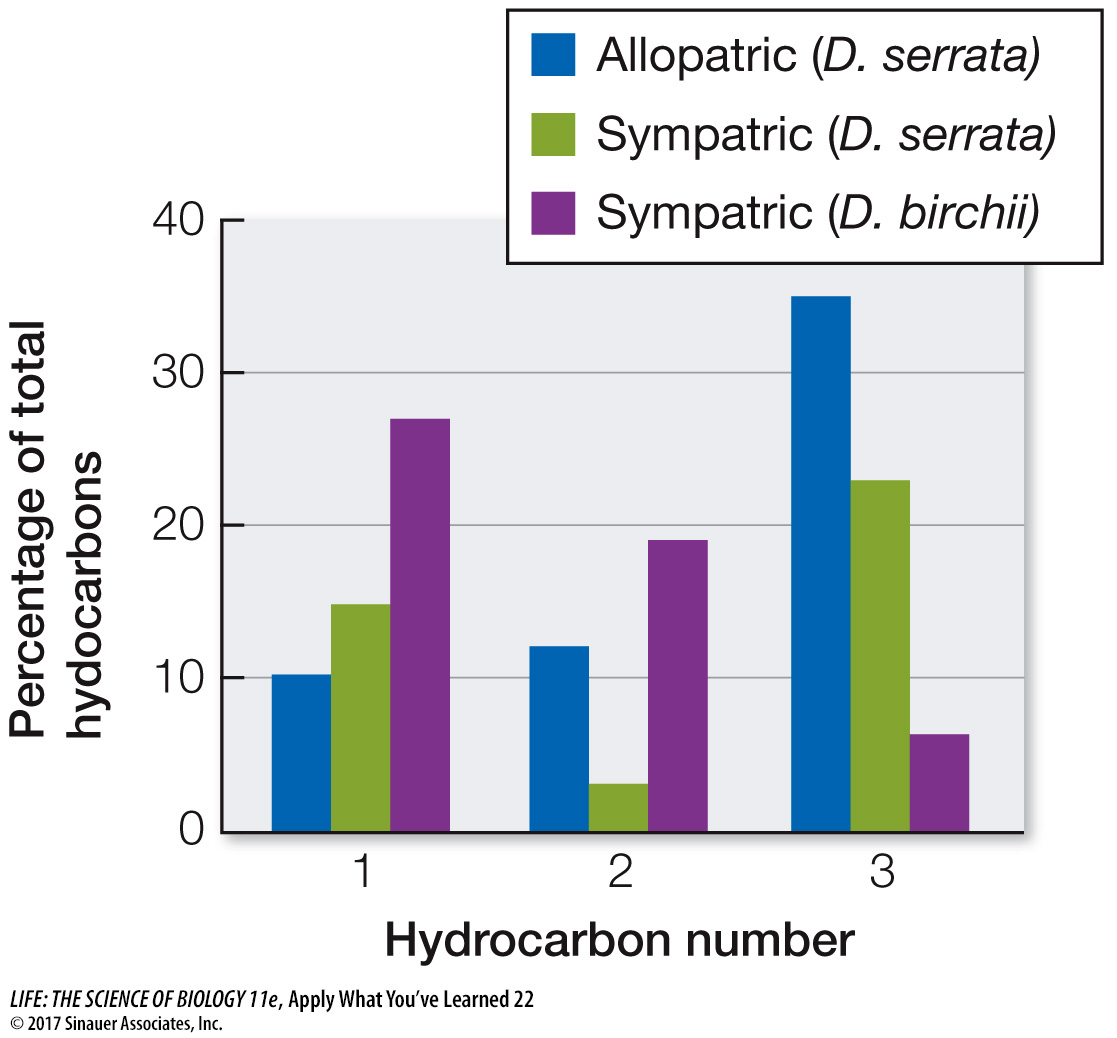Apply What You’ve Learned
Review
22.4
Reproductive isolation is reinforced in sympatry through selection for prezygotic mechanisms that prevent hybridization, which results from postzygotic mechanisms that reduce the fitness of hybrids.
Evolutionary biologists are particularly interested in reinforcement’s role in speciation because this process directly connects natural selection to the origin of species.
Different Drosophila species vary in the concentrations of different hydrocarbons on their cuticles. These hydrocarbons often serve as reproductive signals, with females preferring to mate with males that have the suite of hydrocarbons from the females’ own species over those of other species. As they often are reproductive signals, the hydrocarbons may be the target of the selection involved in reinforcement.
Two species of Drosophila, D. serrata and D. birchii, are found on Australia’s east coast and overlap in range. D. serrata populations from areas where the species encounters D. birchii (sympatric populations) differ from D. serrata populations that do not encounter the other species (allopatric populations), and these differences are likely due to reinforcement. The species do produce some hybrids, but the fitness of the hybrids is low. The graph shows concentrations of three different hypothetical hydrocarbons taken from allopatric and sympatric populations of D. serrata and D. birchii. (Numbers do not add to 100 because there are other hydrocarbons that are not shown.)

Questions
1.
Based on the data, which hydrocarbon(s) show a pattern that is consistent with reinforcement? Explain your answer.
Hydrocarbon 2 shows a pattern consistent with reinforcement. Under reinforcement, the difference between the sympatric populations and the other species should be greater than the difference between the allopatric populations and the other species. This pattern is observed only for hydrocarbon 2.
2.
Suppose the allopatric populations of D. serrata were taken into the lab and exposed to D. birchii for many generations. If the artificial selection in this experiment acted like the natural selection in reinforcement, what would you expect to happen to the concentrations of each of the hydrocarbons in the allopatric populations?
Hydrocarbon 2 in the allopatric populations of D. serrata would be expected to evolve to be more like the sympatric populations and less like D. birchii. Thus, its concentration would be expected to decrease in the lab populations. The concentrations of the other hydrocarbons would be expected to remain about the same, as they do not appear to be undergoing reinforcement.
3.
If the artificial selection did act like the natural selection involved in reinforcement, would you expect the frequency of hybridization between allopatric populations and D. birchii to increase or decrease? Why?
The frequency of hybridization should decrease. The artificial selection is operating on the hydrocarbon because hybridization with the other species is disfavored. As a result, fewer hybridizations should take place.
4.
Would you expect the extent of postzygotic reproductive isolation to change as a result of the artificial selection in the experimental evolution study? Explain.
The level of postzygotic reproductive isolation should not change, as postzygotic isolation generally does not evolve via direct selection.